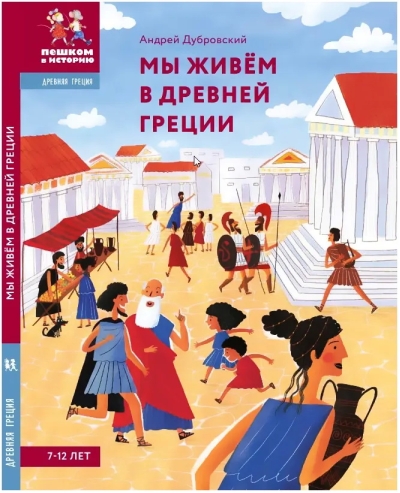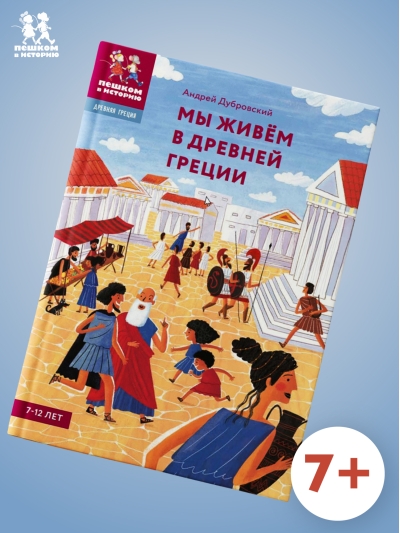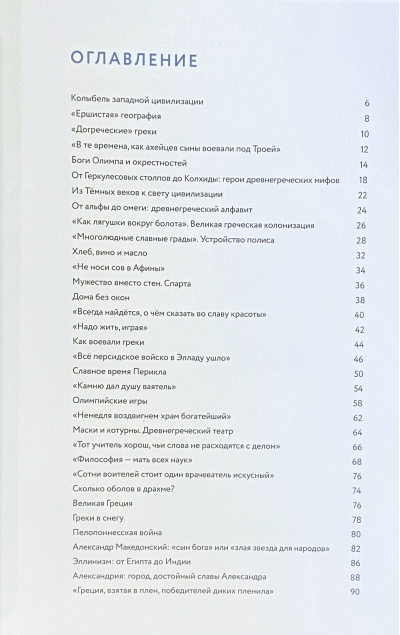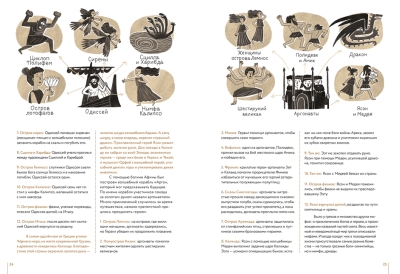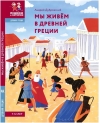We Live in Ancient Greece. Encyclopedia for Children
19.99 €
The only thing available 1
It seems that we know everything about Ancient Greece. The Greeks fought the Persians, told stories about gods and heroes that we call myths, built temples and invented the Olympic Games. Every schoolchild learns the history of Hellas, as the ancient Greeks called their homeland, and everyone has heard at least once: Greece is the cradle of European civilization. Indeed, democracy, theater, philosophy, sports competitions, mathematics and astronomy - and this is not a complete list! - all come from Ancient Greece.
But how did it happen that small Greece with an arid climate, divided by mountains into tiny patches of land suitable for agriculture and habitation, managed to create in art, science, sports, politics - in anything! - what the whole world uses to this day? No school textbook will answer this question, but this book will try. It will explain why Greece is not one, but many small states, how the new weapons of warriors became a stronghold of democracy, why we find Greek traces from Italy and France to the Black Sea coast, and what prompted the Hellenes to set off on such long journeys?
The author of the book, the famous historian and writer Andrei Dubrovsky, tells us in a fascinating and accessible way about the main events in the history of this amazing ancient civilization, and about the daily life of its inhabitants: what houses they lived in, what they ate for lunch, how and where they studied, what they read and what they treated themselves with. This complete picture of the life of the Hellenes, where even such a seemingly trifle as the size of the shield turns out to be important, allows readers to see the interconnection of events and understand how Ancient Greece managed to become the "cradle of European civilization."
But how did it happen that small Greece with an arid climate, divided by mountains into tiny patches of land suitable for agriculture and habitation, managed to create in art, science, sports, politics - in anything! - what the whole world uses to this day? No school textbook will answer this question, but this book will try. It will explain why Greece is not one, but many small states, how the new weapons of warriors became a stronghold of democracy, why we find Greek traces from Italy and France to the Black Sea coast, and what prompted the Hellenes to set off on such long journeys?
The author of the book, the famous historian and writer Andrei Dubrovsky, tells us in a fascinating and accessible way about the main events in the history of this amazing ancient civilization, and about the daily life of its inhabitants: what houses they lived in, what they ate for lunch, how and where they studied, what they read and what they treated themselves with. This complete picture of the life of the Hellenes, where even such a seemingly trifle as the size of the shield turns out to be important, allows readers to see the interconnection of events and understand how Ancient Greece managed to become the "cradle of European civilization."
See also:
- All books by the publisher
- All books by the author
- All books in the series Ancient Greece



